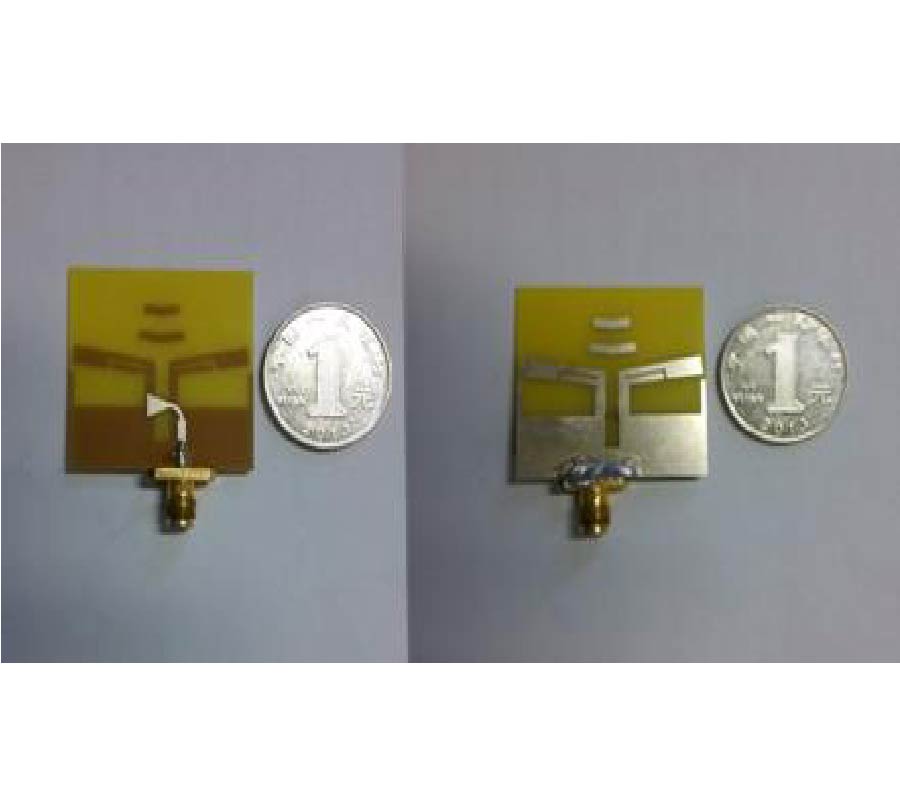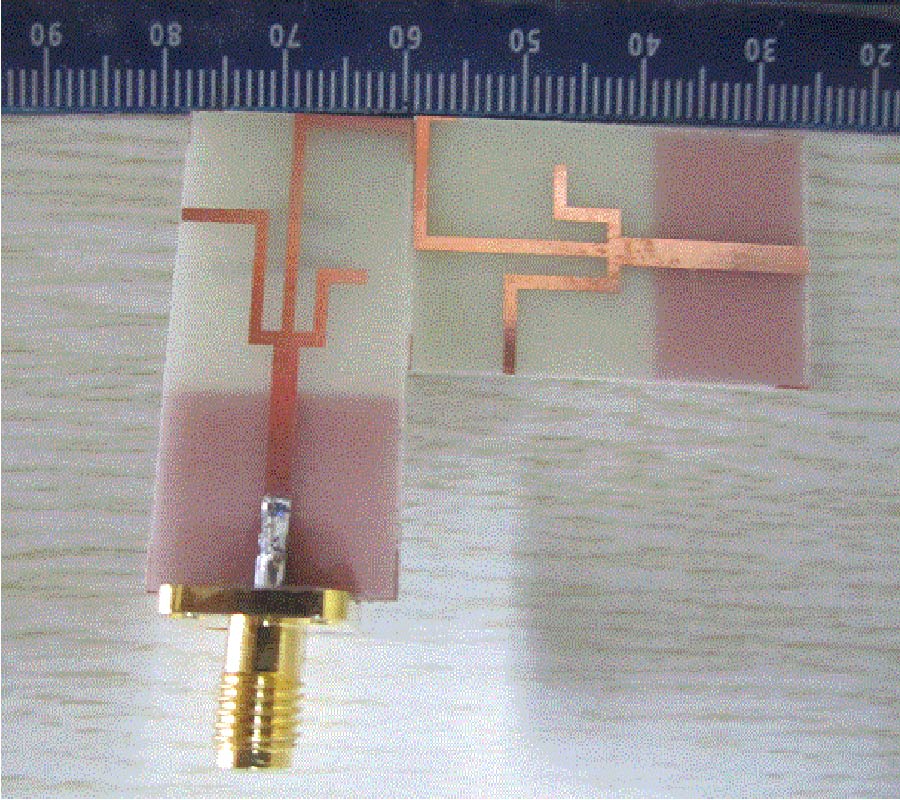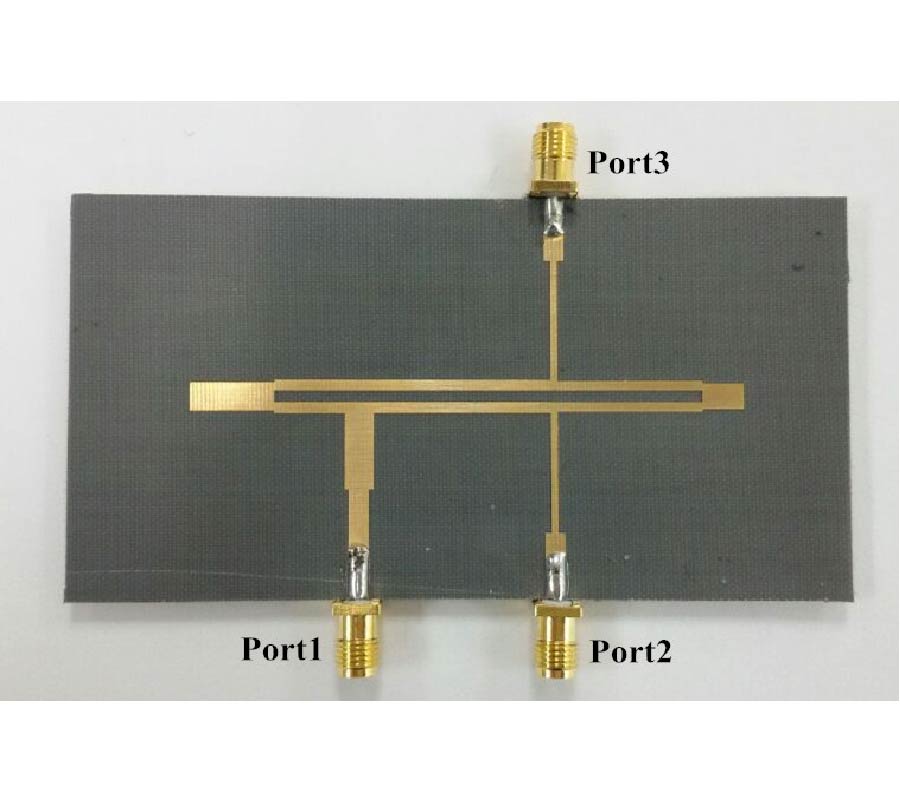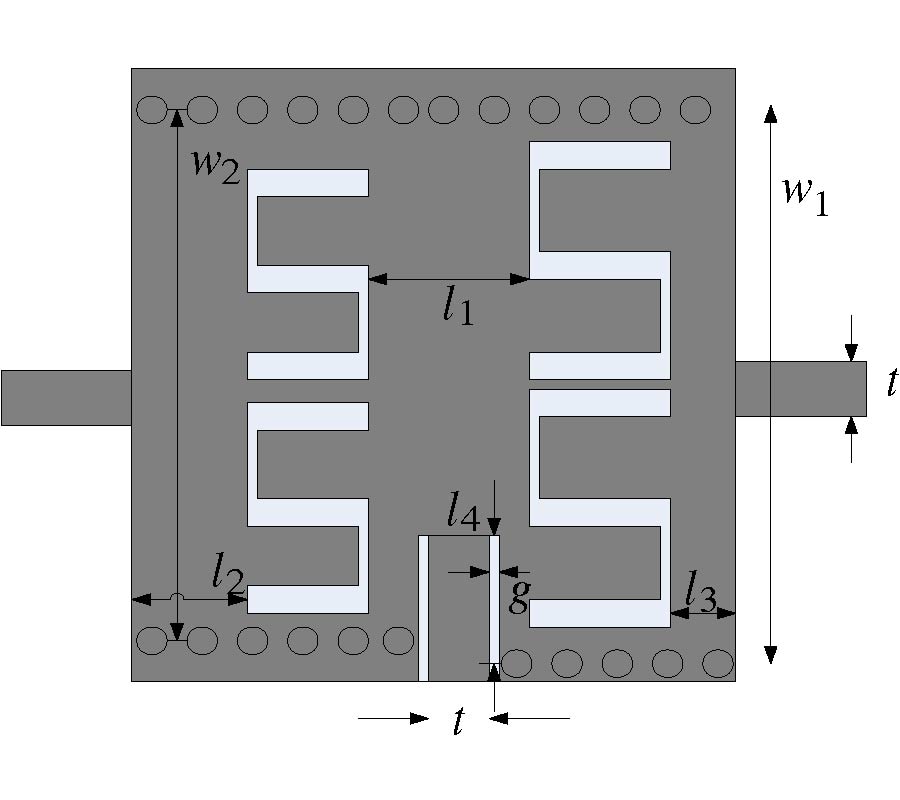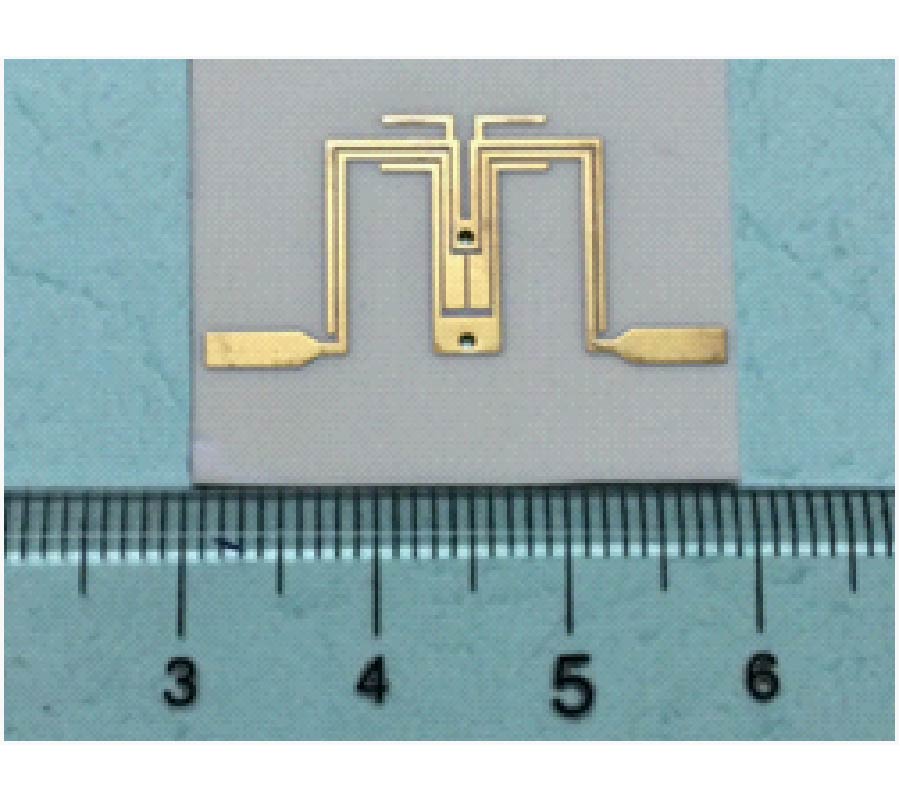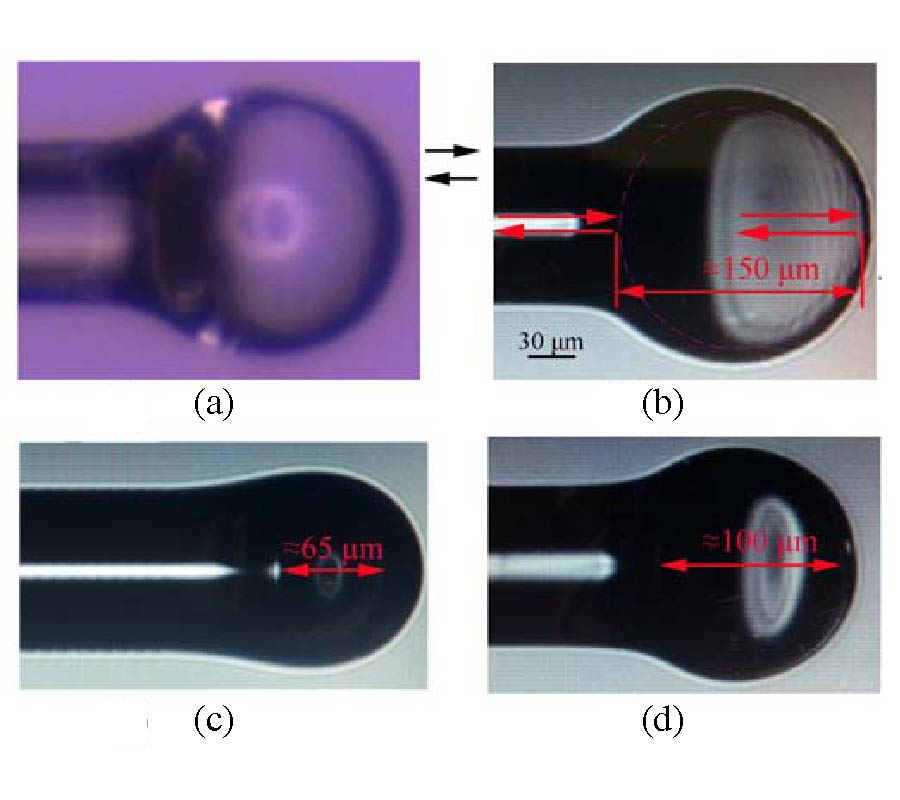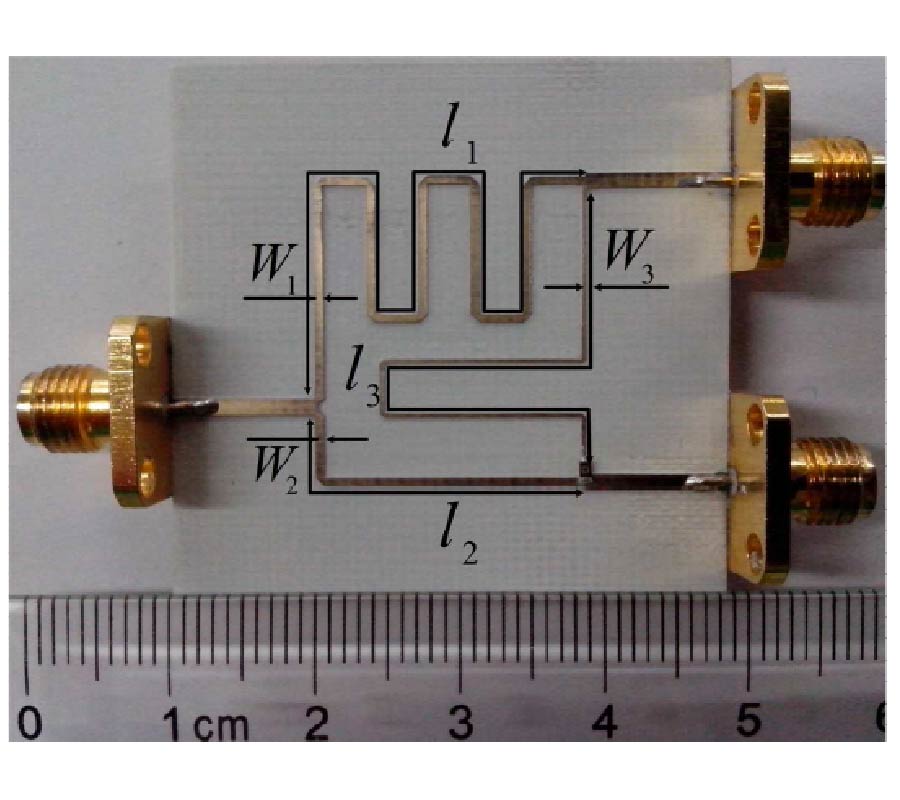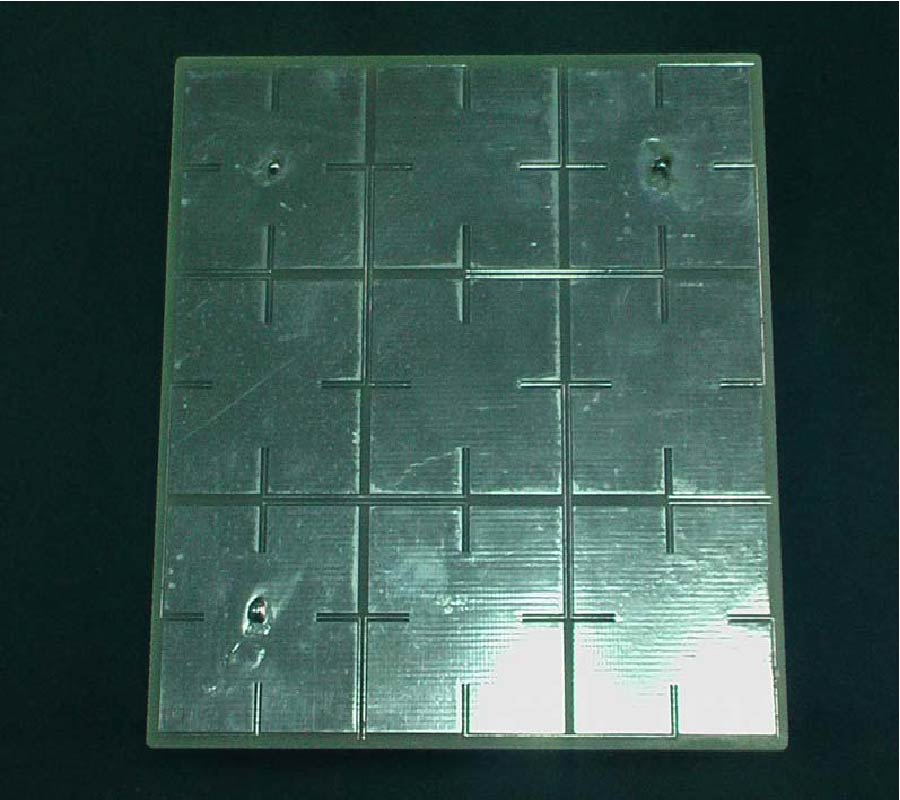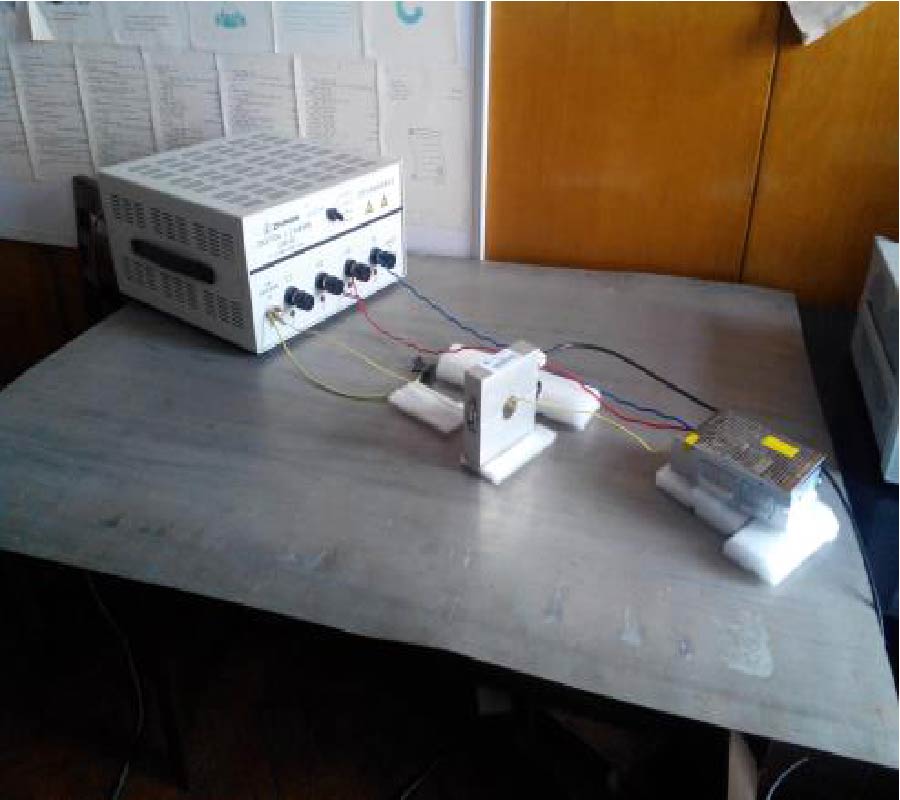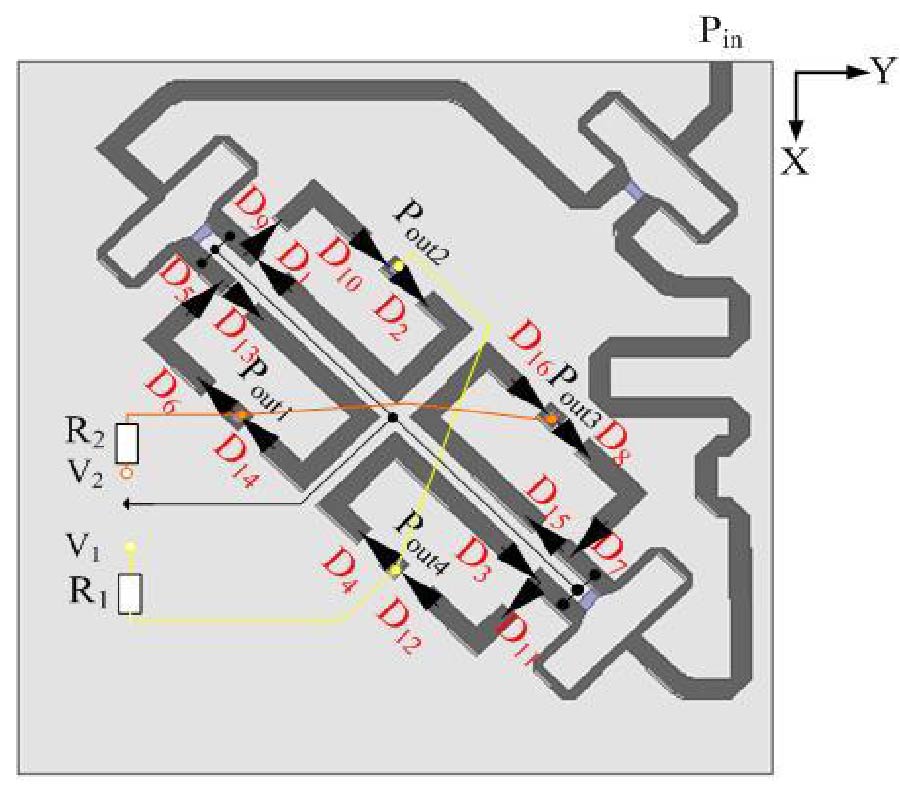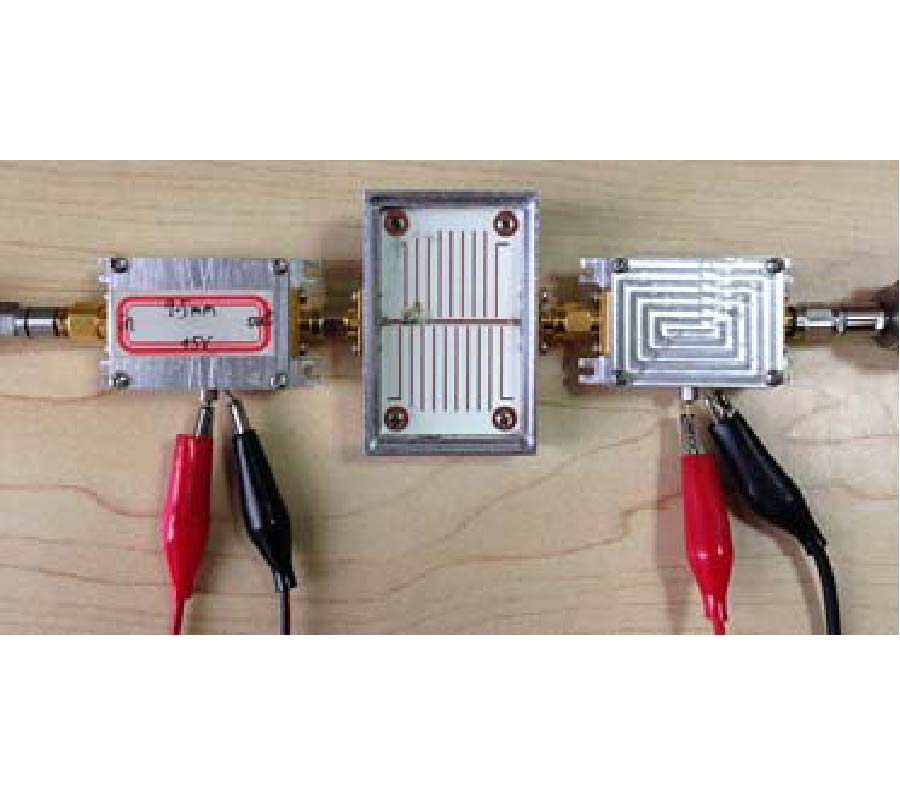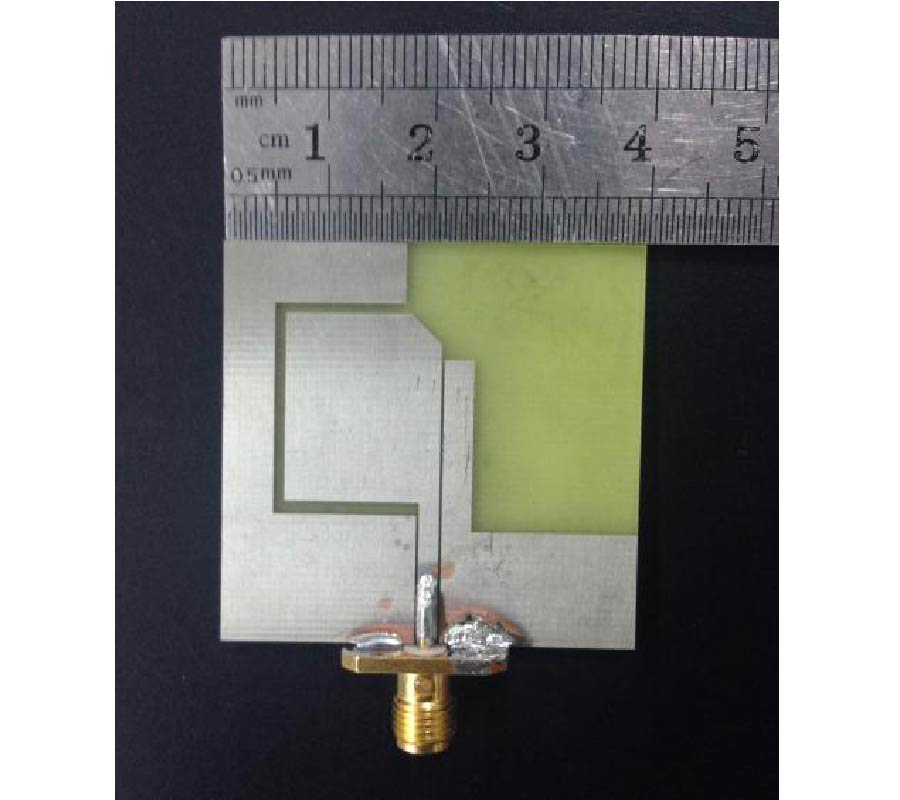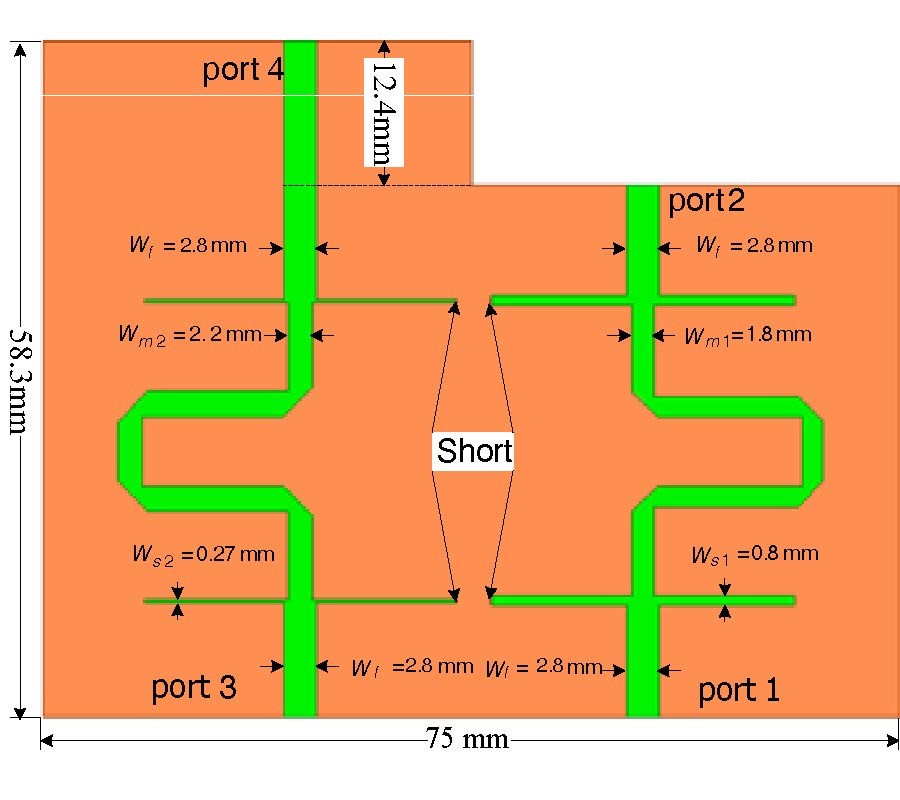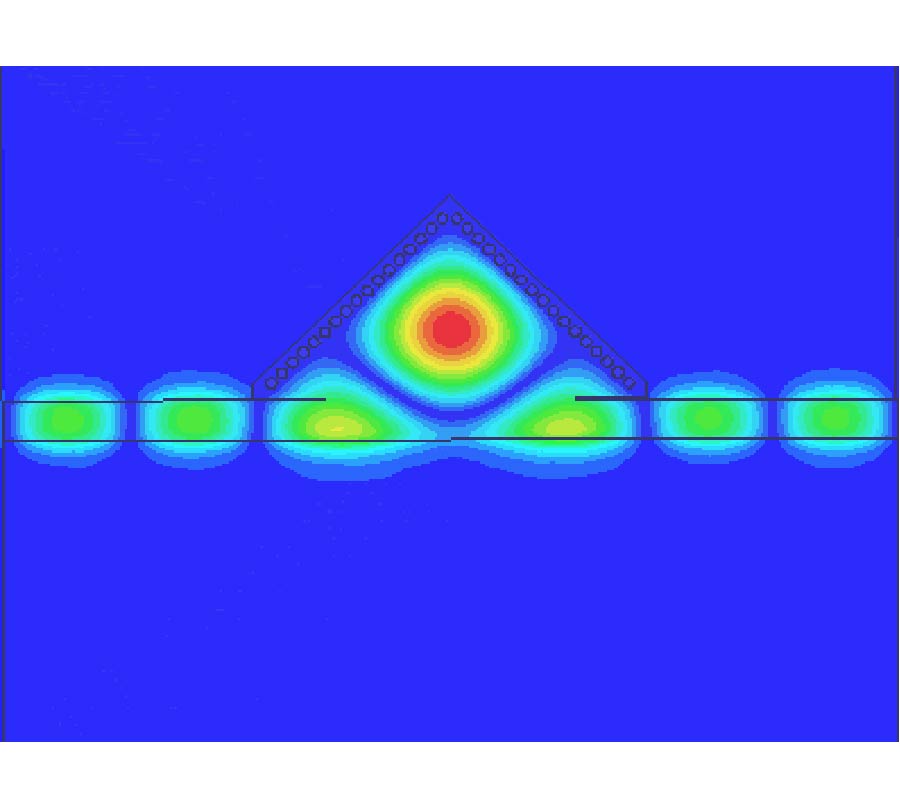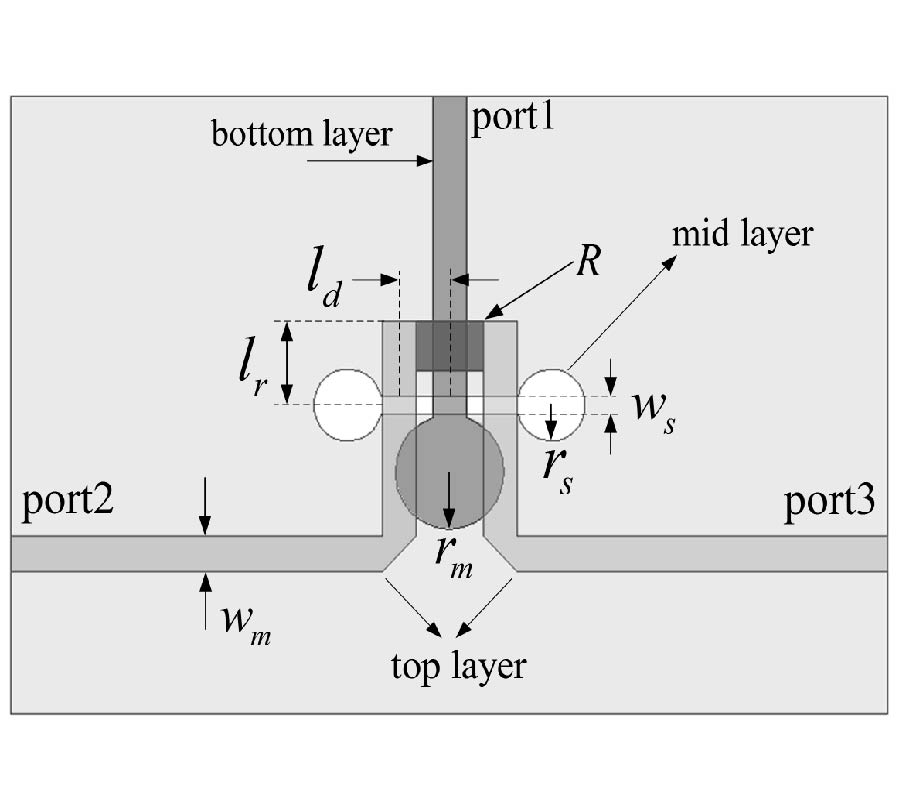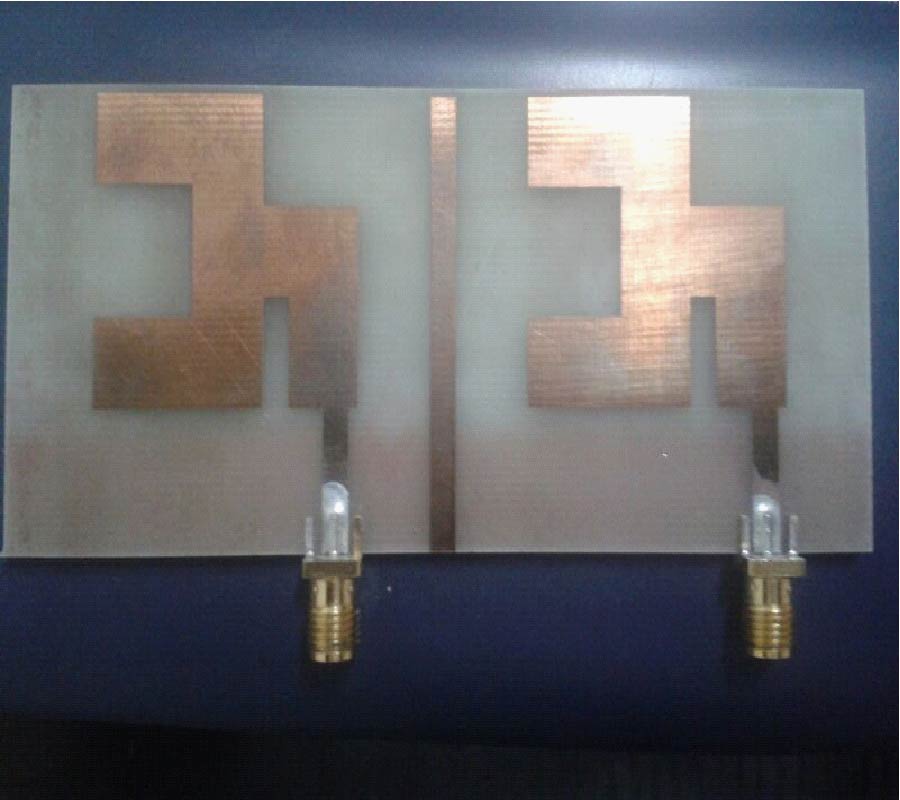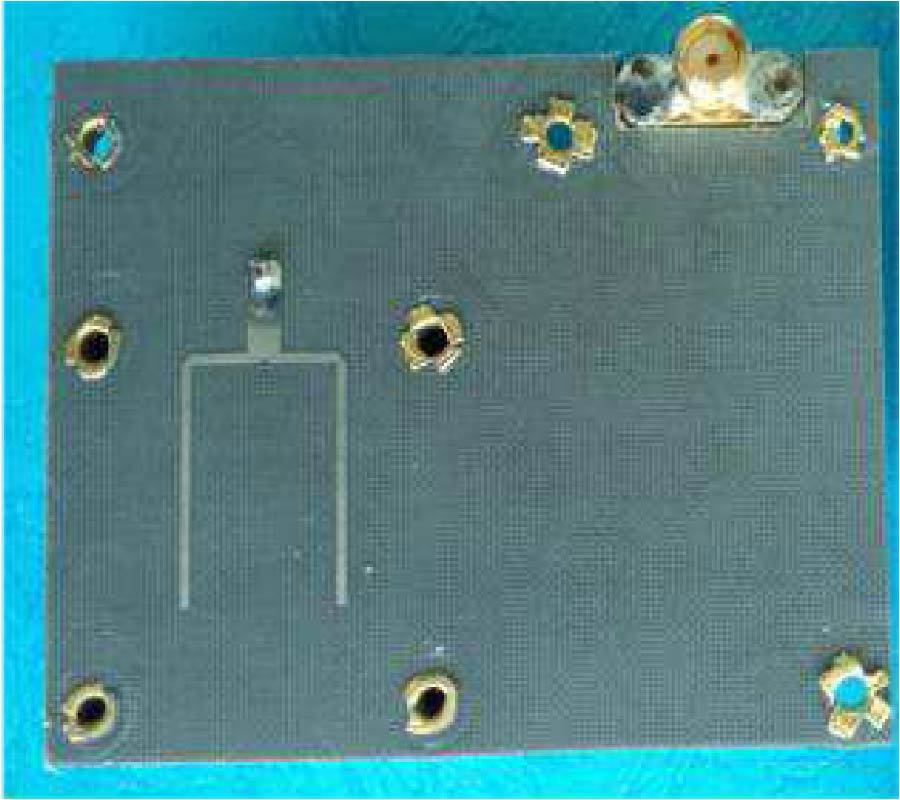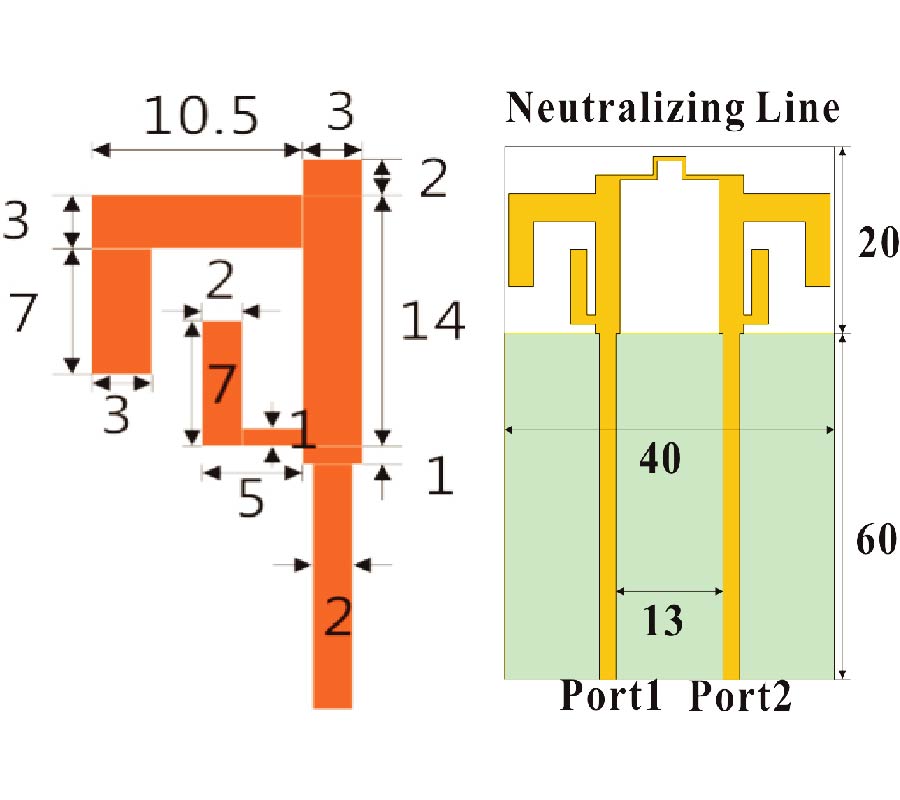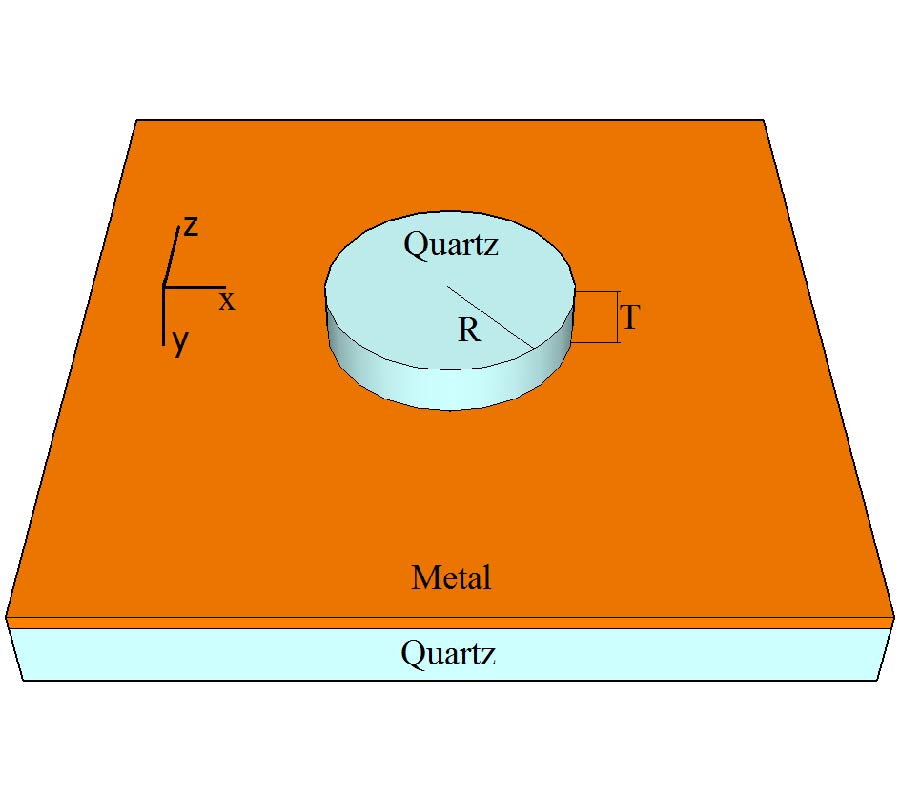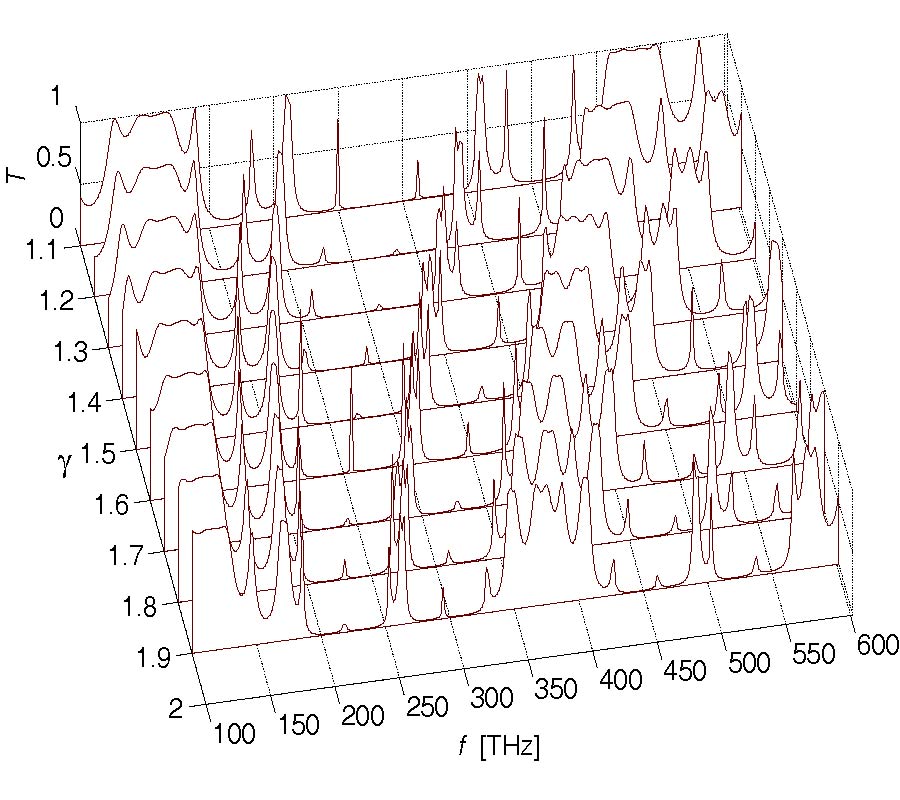2014-09-07 Latest Published
By Shaoshuai Zhang
Zhaoyang Tang
Yingzeng Yin
Progress In Electromagnetics Research Letters, Vol. 48, 137-143, 2014
Abstract
A wideband planar printed quasi-Yagi antenna with band-notched characteristic is presented. The proposed antenna consists of a microstrip-to-slotline transition structure, a gradient driver dipole, and two parasitic strips as directors. Meanwhile, the arms of the driver and two directors are rotated in a certain angle to improve gain. Employing a microstrip-to-slotline transition, a driver dipole and two parasitic strips, the proposed antenna achieves a wide bandwidth for ultra-wideband applications. The driver dipole is connected to the slotline with a coplanar stripline. To avoid the frequency interference from WLAN operating in the frequency band from 5.15 GHz to 5.825 GHz, an L-shape slot etched on the driver dipole element is adopted to achieve notched band ranging from 4.8 GHz to 6.1 GHz. The ground plane is symmetrically added two stubs to implement the lateral size reduction. The measured bandwidth, determined by the reflection coefficient less than -10 dB, covers from 3 GHz to 10.8 GHz. Better than 8.1 dB F/B ratio and the measured antenna gain varying between 4.7 and 8.3 dBi are also achieved in the operating bandwidth excepting in the notched band.
